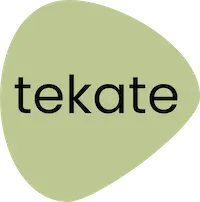Artificial Intelligence (AI) has evolved from a futuristic concept to a practical tool that shapes how businesses operate today. From customer engagement to internal workflow optimisation, AI has the potential to change how your business competes online. If you are a business owner or manager running a WordPress website, you may already be hearing the question: “How do I make my website AI-ready?”
It’s a fair question, but not a straightforward one. AI readiness isn’t a single switch that can be turned on. It’s a combination of mindset, preparation, and integration. In this article, we’ll look at what “AI-ready” really means for a WordPress site, why it matters, and what steps you can take to position your business for the AI-driven digital landscape.
What Does “AI Ready” Mean?
At a business level, being “AI ready” means your website, your data, and your operations are structured in such a way that they can take advantage of AI tools, today and in the future. It doesn’t mean rebuilding your entire site or replacing your team with machines. Instead, it’s about ensuring that:
- Your content and data are structured and accessible, allowing AI tools to understand and utilise them.
- You have the right integrations so that AI systems can connect with your site without friction.
- Your processes are designed to benefit from automation, insights, and customer engagement enhancements that AI can bring.
Think of it like preparing your business premises for a new piece of equipment. The equipment itself may change over time, but the wiring, layout, and safety protocols make it possible to use that equipment effectively.
Why Does It Matter for WordPress Websites?
WordPress powers over 40% of websites worldwide, including small businesses, e-commerce stores, and major brands. Its flexibility makes it a natural platform for AI integration. Already, WordPress users are benefiting from:
- AI-powered SEO tools that suggest improvements and automate optimisation.
- AI chatbots that can instantly answer customer questions.
- Content generation assistants that help teams produce blogs, product descriptions, and marketing copy.
- Image and video tools that automatically enhance media.
But the businesses that will benefit most aren’t just installing a plugin or two. They are strategically preparing their websites and operations to leverage AI as it becomes more advanced and central to online competition.
Key Areas to Focus On
1. Structured Content and Data
AI thrives on well-structured content. If your WordPress site is full of poorly labelled images, untagged blog posts, or inconsistent product details, AI tools will struggle to use that information effectively.
Practical steps:
- Ensure all content uses clear titles, categories, and tags.
- Use structured data (schema) where possible to describe products, services, and events.
- Keep your media library organised with proper alt text and descriptions.
This isn’t just good practice for AI – it also improves your SEO and accessibility.
2. Customer Experience and Engagement
One of the first places businesses see the value of AI is in customer interaction. Chatbots, recommendation engines, and automated support can reduce response times and increase customer satisfaction.
On WordPress, this might mean:
- Adding an AI-powered live chat tool.
- Offering personalised product recommendations on your WooCommerce store.
- Automating routine support queries so your team can focus on higher-value tasks.
The key here is not to replace the human touch but to enhance it. Customers appreciate quick answers but still value personal relationships when decisions matter.
3. Security and Compliance
AI tools often require data access. That means your WordPress site must be secure and compliant with regulations such as GDPR. A site with weak hosting or outdated plugins isn’t AI-ready—it’s a liability.
Business considerations:
- Is your hosting platform secure and scalable?
- Do you have policies for handling personal data responsibly?
- Are your plugins and themes actively maintained?
AI readiness and good governance are closely intertwined.
4. Integration With Business Systems
Your website doesn’t exist in isolation. For AI to be useful, it often needs to connect with your CRM (Customer relationship management), email marketing system, or e-commerce platform.
For example:
- AI could help score leads on your site, but only if data flows into your sales system.
- AI could recommend stock replenishment, but only if it integrates with your inventory system.
WordPress is highly flexible when it comes to integration, but making the right decisions now, using APIs, avoiding closed systems, will determine how well you can adopt AI later.
5. Content Creation and Marketing
Generative AI tools are already making a significant impact in marketing. From drafting blog outlines to suggesting keywords, they can accelerate your team’s work.
But here’s the business reality: content created solely by AI will rarely stand out. The winners will be the businesses that utilise AI to support human creativity, rather than replace it.
In WordPress terms, this might mean:
- Using AI SEO tools to identify content gaps.
- Drafting product descriptions with AI, then refining them with human expertise.
- Analysing site performance with AI insights and adjusting content accordingly.
AI is the assistant, not the author.
Misconceptions About AI Readiness
As with any trend, there are myths associated with it. Let’s clear a few up:
- “I need to rebuild my site.”
Not necessarily. Most WordPress sites can be prepared with sensible adjustments, better hosting, and the right integrations. - “AI will do all the work for me.”
AI augments human effort but doesn’t eliminate the need for strategy, creativity, and decision-making. - “It’s too expensive for small businesses.”
Many AI tools are available on affordable subscription models or even built into plugins you may already use. The bigger cost is often time and mindset change, not money.
The Strategic Benefits of Being AI Ready
Why should a business invest in making its WordPress site AI-ready now? Three big reasons stand out:
- Competitive Edge: If your competitors are using AI to engage customers faster, optimise their sites better, and convert more leads, you’ll be left behind.
- Efficiency: AI can take repetitive tasks off your team’s plate, freeing them to focus on higher-value activities.
- Future-Proofing: AI is not going away. Preparing now means smoother adoption later as tools evolve.
A Practical Roadmap for WordPress Site Owners
Here’s a step-by-step approach to becoming AI-ready:
- Audit your site – Review the hosting, security, plugin health, and data structures.
- Tidy your content – Ensure consistent tagging, metadata, and schema.
- Secure integrations – Choose systems and plugins that use open APIs and can connect with AI tools.
- Pilot AI tools – Start small with an AI SEO assistant or chatbot. Learn how it impacts your team and customers.
- Review policies – Make sure GDPR and data handling policies are clear and up to date.
- Train your team – AI adoption isn’t just technical—it’s cultural. Help your staff understand how to use tools effectively.
Conclusion: AI Readiness is Business Readiness
Making your WordPress site AI-ready isn’t about jumping on a hype train. It’s about ensuring your business can adapt to the changing nature of digital engagement.
The businesses that succeed will be those that view AI not as a magic trick, but as part of a broader strategy for enhancing efficiency, improving customer service, and driving growth.
By preparing your WordPress website with structured data, secure integrations, and thoughtful adoption of AI tools, you’ll be positioned to take advantage of opportunities as they arise—without scrambling to catch up.
So when someone asks whether your site is AI-ready, the right answer isn’t a yes or no. It’s that you’re on the journey, preparing the ground, and making sure your business is ready to thrive in an AI-driven future.

